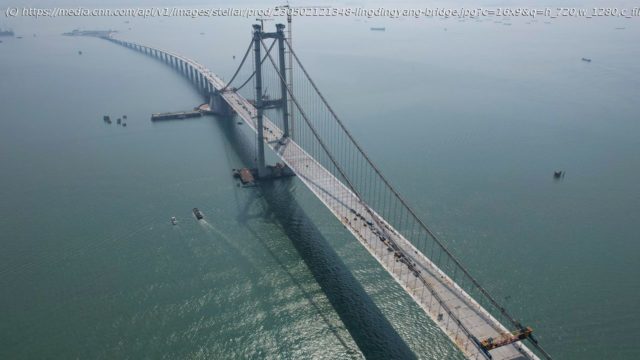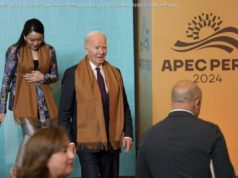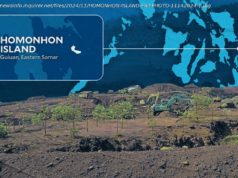Array
Editor’s Note: Sign up for Unlocking the World, CNN Travel’s weekly newsletter. Get the latest news in aviation, food and drink, where to stay and other travel developments.
Even in a land known for gargantuan, record-breaking infrastructure, this project is turning heads.
At 15 miles long (24 kilometers), eight lanes wide and featuring artificial islands and an undersea tunnel, China’s $6.7 billion Shenzhen-Zhongshan Bridge is nothing if not ambitious.
To much fanfare in the country’s state media, the bridge’s builders recently claimed a new world record by paving in a single day more than 243,200 square feet (22,600 square meters) of asphalt, the equivalent of more than 50 basketball courts.
Yet strange as it may sound, this is not the world’s longest sea bridge. That honor belongs to its 34-mile long neighbor, the Hong Kong-Zhuhai-Macao Bridge – just 20 miles away.
To some observers, the building of these giant bridges in such close proximity is testament both to China’s growing ambitions on the global stage and the problems it faces in realizing them.
Like its sister bridge in Hong Kong, when the Shenzhen-Zhongshan Bridge opens to traffic next year after eight years of construction, it will form a central plank in China’s master plan to develop its Greater Bay Area, one of the world’s largest and most populated urban areas, into an economic and technological hub that can rival San Francisco, New York or Tokyo.
It’s an ambition that, like the bridges themselves, is simply massive in scale. The Greater Bay Area is home to 68 million people, covers 21,800 square miles and encompasses 11 cities: Hong Kong, Macao and nine others including Zhongshan and Shenzhen. Shenzhen alone is home to more than 12 million people, not to mention scores of multibillion-dollar firms such as drone-maker DJI and social media company Tencent that have helped to earn it the moniker of “China’s Silicon Valley.”
Beijing hopes that the bridges can help bring together the cities in this huge and diverse area both physically and conceptually. Travel times between Zhongshan and the Shenzhen Bao’an International Airport – mainland China’s third busiest, which hosted over 37 million passengers in 2019 – are expected to be cut from two hours (using current roads) to 20 minutes.
But many observers believe the bridges are also meant to serve another, more political purpose, by subsuming what are at present quite disparate regions – Hong Kong is a former British colony, Macao a former Portuguese one – into a single Chinese identity. And, according to some critics, the scale of this undertaking dwarfs even that of the bridges.
Making a statement
Austin Strange, who specializes in Chinese foreign policy at the University of Hong Kong, said the new bridge would no doubt bring “real economic value” by drastically reducing commute times between the cities while also cutting traffic.






